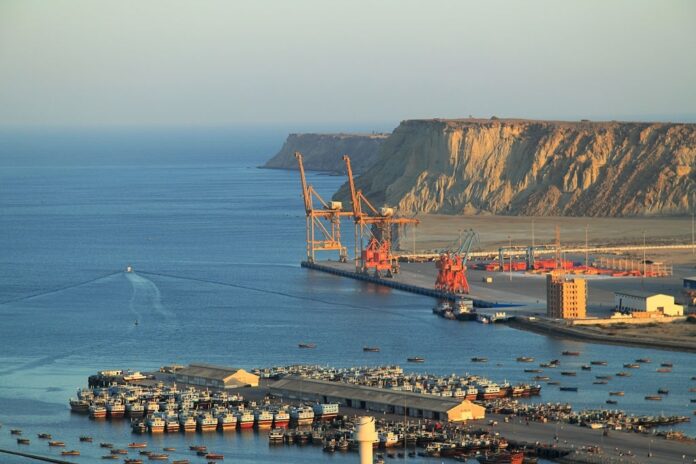ISLAMABAD: China-Pakistan Economic Corridor (CPEC) will help Pakistan break free from debt burden through wealth creation.
Some western media and think tanks have labelled it a “debt trap” for Pakistan, but the situation on the ground shows it is allowing the country to break free from the shackles of Western debts through wealth creation.
Pakistan lies at the heart of the Chinese Belt and Road Initiative (BRI). Beijing has committed to funding 80 percent of CPEC worth $62 billion. However, despite such generosity and ambition, the Western media has been making propaganda regarding this project.
The mega project is being hailed as a game-changer for Pakistan. However, since 2018, the growth of CPEC has been hampered by the economic crisis. International donors have expressed concerns that CPEC financing has resulted in massive purchases of Chinese technology and supplies, increasing Pakistan’s debt load in 2018.
This shows that the “debt trap” rhetoric is misguided and a failed attempt to downplay the benefits of CPEC to Pakistan. CPEC can alleviate Pakistan’s financial troubles by providing a firm foundation for the industry by meeting the country’s energy needs and establishing an effective transportation infrastructure.
China’s vote of confidence in Pakistan’s economy increases as it remains the greatest donor of net foreign direct investment (FDI) in Pakistan when compared to other countries, according to recent research by Gwadar Pro.
Long-term concessional government borrowing from China is used to fund CPEC infrastructure and transportation projects. The FDI and commercial borrowing from Chinese financial institutions are used in CPEC energy projects, which are either primarily foreign-owned joint ventures or Chinese investors.
However, non-CPEC energy projects are financed in a variety of ways, including private domestic funding, private commercial financing, and concessional financing by the government from international financial institutions.
If executed as anticipated, these initiatives will assist Pakistan in eliminating the power deficit and significantly improving energy costs and fuel mix. Over the next seven to nine years, current investment estimates call for an increase in installed capacity of around 24 gigawatts, including 8.6GW due to CPEC (Source: Centre of Excellence for CPEC). The majority of the initiatives are focused on renewable energy.
As a consequence, the initiative will assist Pakistan in eliminating its deficit and reducing its reliance on furnace oil, making the energy industry more independent and resilient to global oil price fluctuations.
Meanwhile, measures regarding investment by Pakistan are expected to result in a long-term balance of payments (BoP) outflows. In the medium term, these projects will require BoP outflows in the form of debt repayment, profit repatriation, and input fuel imports.
These outflows are expected to rise in the coming years, culminating at roughly USD3.5-4.5 billion by FY2024-25 and then progressively decreasing in the long term as forecast savings from the phase-out of oil-based energy generation are realized (Source: Centre of Excellence for CPEC).
Pakistani exports are rapidly expanding to fulfill the country’s growing foreign currency funding demands. The overall exports in FY2020-21 were recorded at USD27.209 billion, up from USD21.476 billion in 2019-20, according to the Federal Board of Revenue (FBR).
This is also due to the positive impact of CPEC on exports, which will help balance the predicted losses. However, given the time necessary to build up extra export capacity as a result of efficiency gains, the impact of these investment programs would most likely accrue gradually over time.
After the completion of energy generation and under-construction projects, the second round of CPEC will have a broader impact on economic activity. In the future, increased productivity, lower costs, improved trade linkages, and infrastructure are expected to boost Pakistan’s gross domestic product (GDP).
The effects of the second round of CPEC will most likely emerge over time and may result in a large contribution in the long term, albeit the actual impact will be dependent on many other supportive factors.
CPEC projects are in full gear, and the country is rapidly moving towards industrial cooperation, which will help the government lower its debt load by wealth creation.























